Traps in Dungeons and Dragons are a terrifying part of the dungeon delver’s life. Dungeons are dark and dangerous places. Those who live in these places do not like trespassers coming in and killing their friends and stealing their treasures. Those who adventure in these dark and deep places know to expect such dangers and prepare for them accordingly.
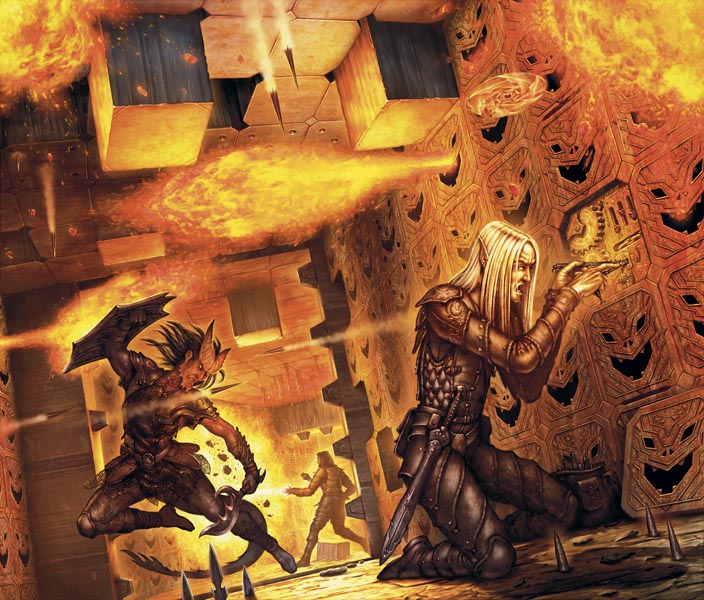
Traps have been with the game since the very beginning. The possibility of monsters hiding in every room seemed unlikely. It was only natural that some rooms would be empty, some rooms would have strange tricks and magical effects and some rooms would contain traps.
But traps are not limited to rooms. They can be found in many places in a dungeon. Traps can be found in hallways, stair cases, rooms, treasure chests and containers, ceilings and even in the wilderness itself. Nowhere is safe. And that is the point. No place in the dungeon should be safe. Not even places that do not appear to have monsters guarding them.
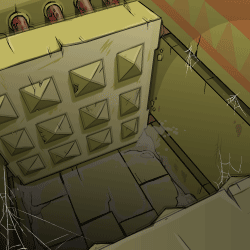
Room Traps in Dungeons and Dragons
Room traps can consist of many types of dangers. Not every trap is really a man made hazard. Sometimes a ceiling might be weak or there could be a hole in the floor created by age or some long forgotten event. These types of dangers are just as dangerous to the delver as a man (or monster) made trap.
Some room traps might include things like these:
- Crushing walls
- Crushing ceilings
- Walls or ceilings that move and also project sharp objects like spears or spikes
- Rooms that fill with sand
- Rooms that flood with water
- Vents that spray gas or dump acid and flaming oil
- Chutes that drop players to other levels of the dungeon
- Elevator rooms that move the whole party up or down a level or several levels
- Collapsing ceilings
- Stone blocks that drop from the ceiling
- Floors that are only an illusion
- Floors that tilt
- Pit traps
Of course this list is not all inclusive. There are many other types of traps one could find that might endanger all of those in a room.
Stair Case Traps in Dungeons and Dragons
One entering the dungeon for the first time should be cautious. One should not expect that entering such a place is safe. The way it could easily be trapped. Often such dark and dangerous places have multiple entrances. Those who dwell inside of the dungeon may well trap the more obvious places of entry and then use less obvious entry points for their own travel.
Some possible forms of staircase traps include:
- Collapsing stairs
- Stairs that turn into slides and drop the party immediately into combat (or into spikes waiting below)
- Hollow stairs that trap a single player or perhaps damage the leg of the trapped person
- Stairs that are actually only an illusion (and actually are a dead drop)
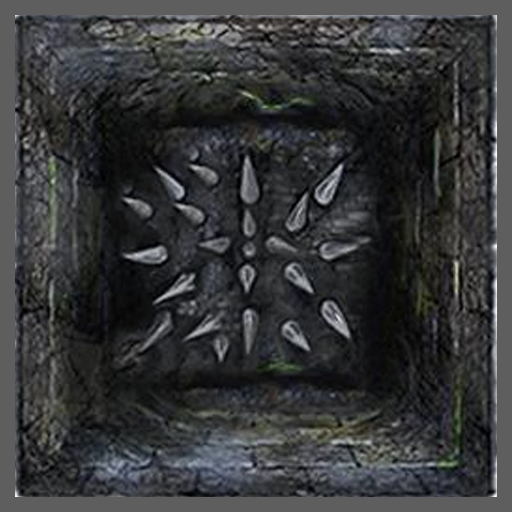
Hallway Traps in Dungeons and Dragons
The passages in the dungeon are not safe to travel without taking precautions. Someone in front of the party would be wise to be probing ahead with a ten foot pole. Failing to take such a simple precaution can quickly lead to disaster. Many a dungeon delver has met their doom for failing to do so.
Some possible hallway traps one might encounter could include:
- Pits
- Pits with spikes
- Pits with locking trap doors
- Walls that fire arrows, darts or spears
- Rolling boulders that are sitting on a ledge down some dark passage
- Passages which shift
- Portcullis which drop from the ceiling to block the way
- Trip wires and loose trigger stones in the floor which cause vents to dump oil or acid
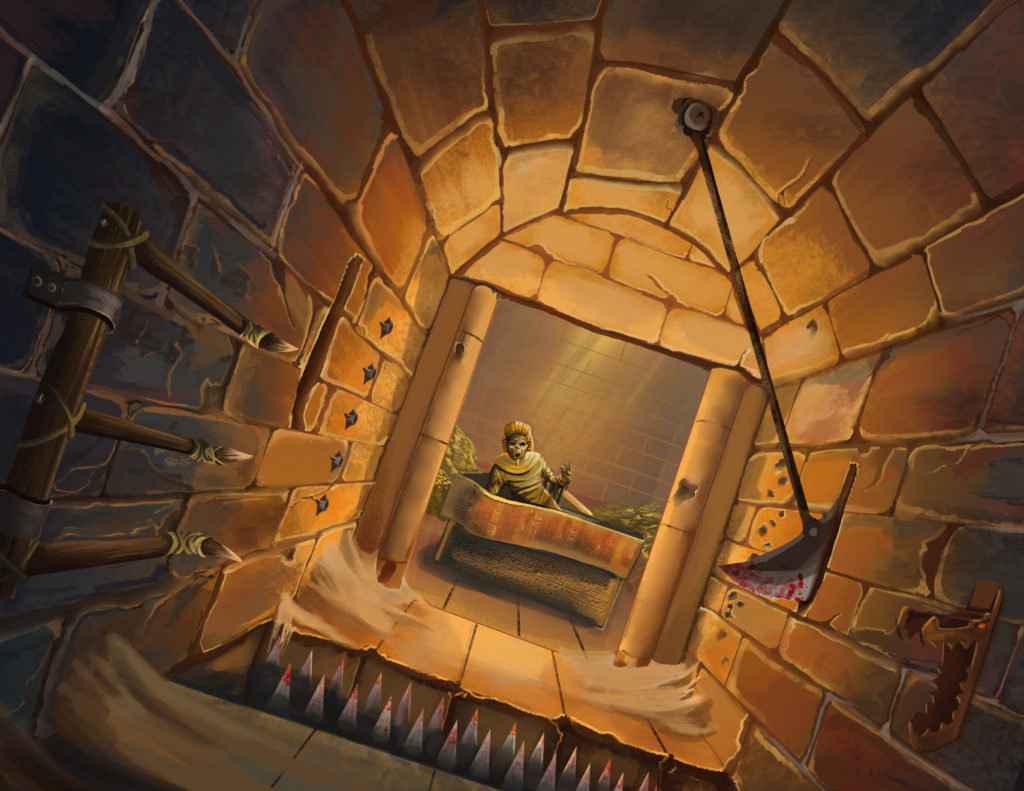
Door Traps in Dungeons and Dragons
Sometimes even the doors one finds in the dungeon are not even safe. Sometimes they are trapped. Sometimes….they are the trap. Some possiblities:
- The door which is actually a mimic
- Doors which resist
- Doors which fall down when touched revealing some monster beyond the door which the adventurers would have preferred not to meet in this way (medusa perhaps?)
- One way doors which do not allow exit
- Springing doors which open and then slam shut on a delver
- A door which teleports the first person to touch it somewhere away from the rest of the party
- The guillotine doorway
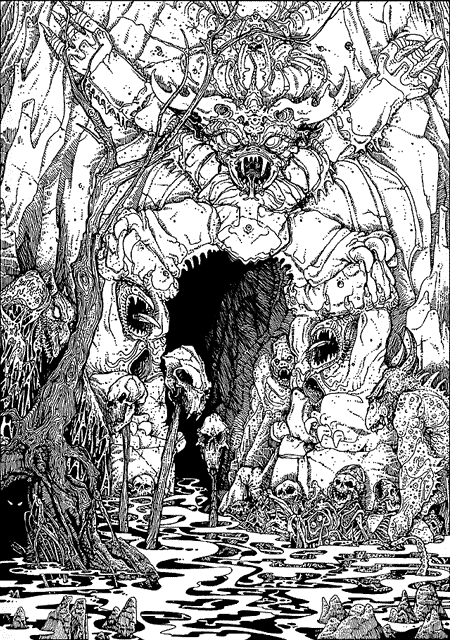
Traps in Dungeons and Dragons have different purposes
Not every trap is intended to be a death trap to those who encounter them. There are many possible purposes for traps in Dungeons and Dragons. Some possible purposes might include:
- To wound or maim enemies and burn resources
- To capture intruders
- To sound an alarm that intruders are present
- To kill
- To channel enemies in a specific direction
- To protect treasures from theft
- To make a creative puzzle or obstacle
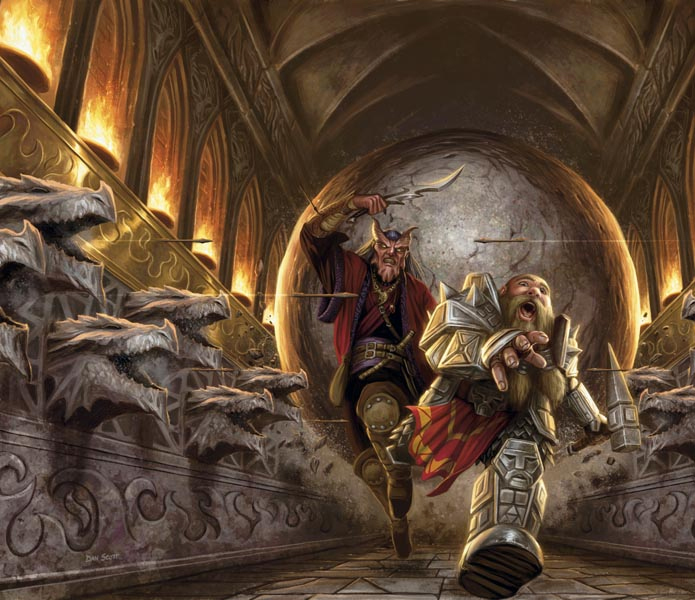
Traps in Dungeons and Dragons that wound or maim
Wounding, maiming and burning enemy resources is a basic purpose of the trap maker. When others enter a dungeon it is likely that they will have healing resources available to them. Causing them injuries may force the intruding dungeon delver to use up some of their healing spells and magic early and force them to leave the dungeon earlier than planned.
Such traps are often merely an annoyance rather than a serious danger. Some of these types of traps might include:
- Pits
- Vents
- Scything blades
- Arrows, spears, darts
- Poison gas (of all types)
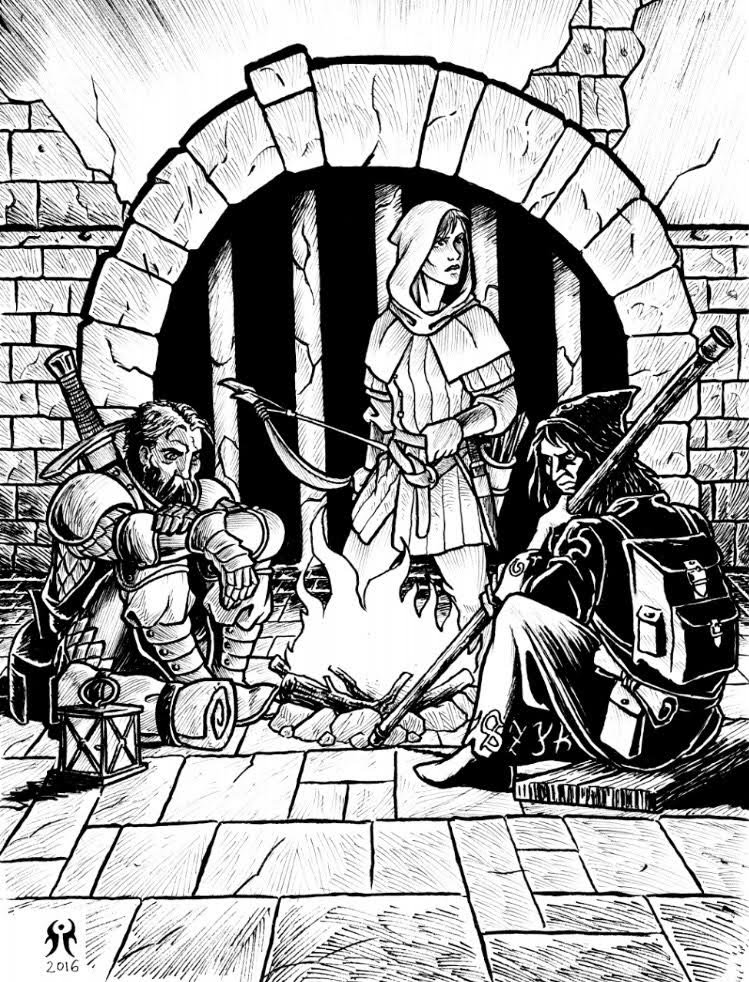
Traps in Dungeons and Dragons that capture or confine
Sometimes the trap maker merely wants to capture intruders. Such intruders can be tortured, questioned or killed at leisure later. Many a dungeon has prison cells still filled with the bones of those who were taken prisoner.
- One way doors that allow entry but not exit
- Portcullis that slams down blocking the exit
- Cage traps
- Net traps
- Steel walls that slide down behind a door
- Teleporters that send delvers to a prison cell
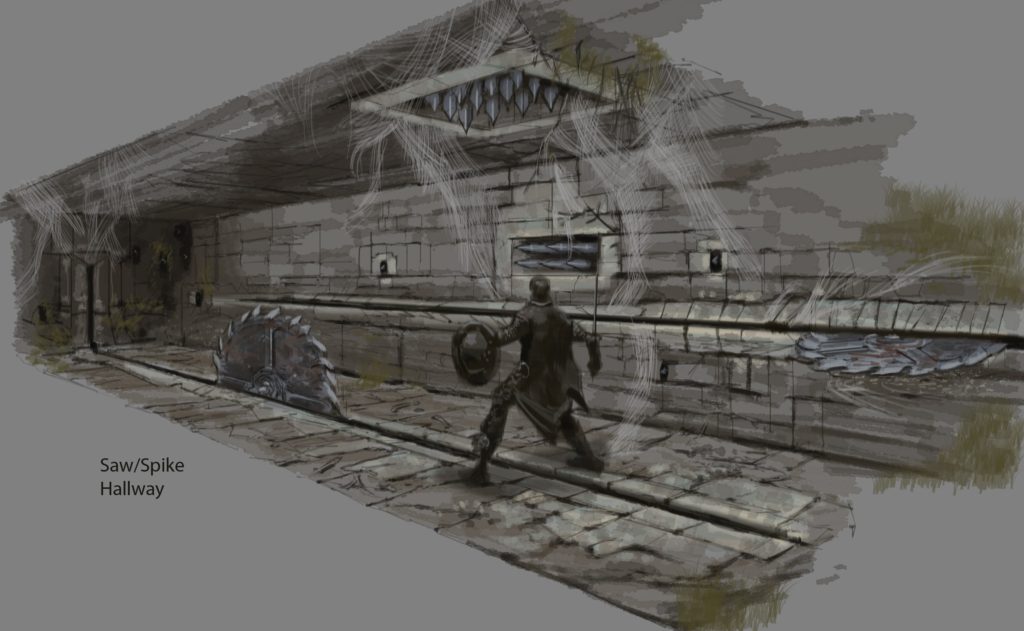
Alarm Traps in Dungeons and Dragons
A trip wire, snare or a loose stone in the floor can be connected to something that does no harm at all to the delver but merely makes a very loud noise. Such traps alert guards that adventurers are present. The guards can then set up an appropriate ambush. Such noise traps might include:
- Gongs
- Rock slides
- Stone blocks falling
- Magic mouths which begin screaming when intruders arrive

Death Traps in Dungeons and Dragons
And of course…some traps are intended to kill. Why get one’s hands bloody when you can let the trap do the work for you? Sometimes it is just a good idea to set up some hazards that can be fatal to intruding adventurers who make a mistake.
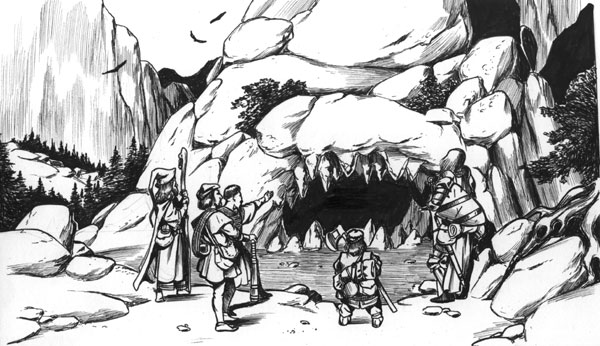
Some possible death traps might include:
- Crushing walls and ceilings
- Deep pits with poisoned spikes
- Spheres of Annihilation in the mouth of a demon face on the wall (See Tomb of Horrors)
- Huge falling stone blocks
- Contact poison on treasure or coins
There are so many possible death traps one can put into a dungeon. Obviously players do not like seeing their beloved character slain by such traps. Even if it warms the heart of the dungeon master one should probably not put such traps in play without some possible way to escape from it.
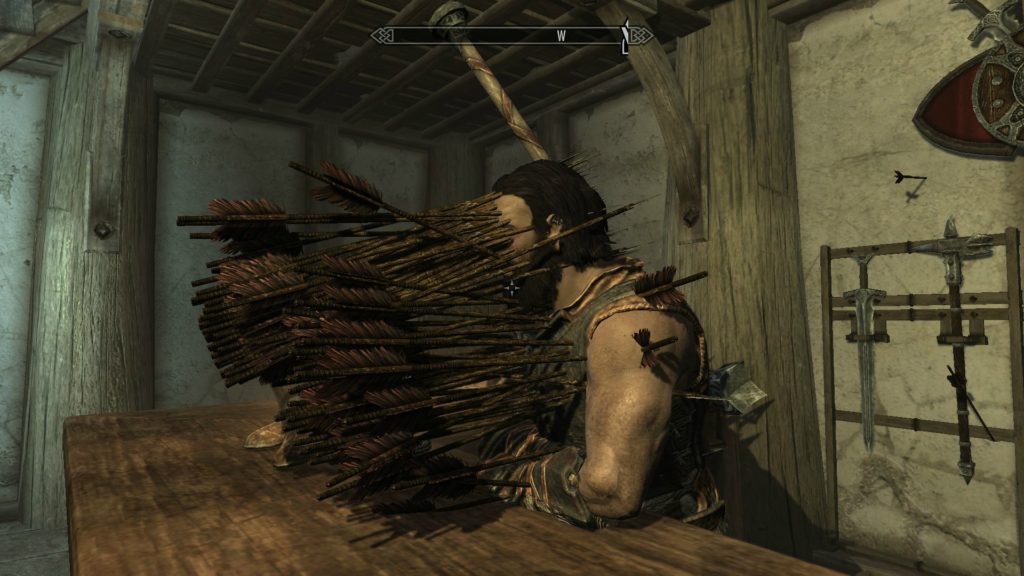
Traps in Dungeons and Dragons that channel adventurers
Sometimes the designs of a villain are to force the adventurers to travel in a direction that is more dangerous than the ones they might otherwise choose. Setting up traps can lead to this. Such traps might include:
- Portcullis that drops and blocks a path
- Falling blocks
- Shifting passages
- Teleporters
- Caltrops that drop (and might be poisoned) in a particular path
- Whirling blades (blade barriers)
- Rolling boulders
- Flooding rooms and passages
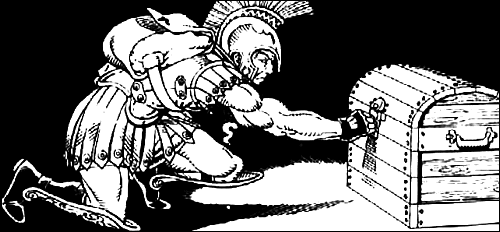
Protecting treasure with traps in Dungeons and Dragons
The purpose of adventurers in entering dungeons and catacombs and lost tombs is to find treasure. Gold, gems and magic items are what drive the adventuring trade. Without such treasures one would not risk life and limb to explore such places. There are many possible ways to protect treasure with traps. Some possible ways are:
- Poison darts firing from a chest or from some other point in the room
- Poison gas spraying from the lid of a chest
- Magical rune traps painted on the inside lid of a trap or on the first page of a spell book found
- Poison needles that prick the finger of the thief that is picking the lock of a treasure container
- Contact poison on the treasures themselves
- Jaw traps that snap shut on someone reaching into a chest
- Chests which are not really chests at all but are instead a mimic (or killer mimic)
- Vipers or cobras placed inside of a chest to bite anyone opening it
Traps in Dungeons and Dragons that are a puzzle or obstacle
In order to break up the monotony of hacking and slashing monsters in every room and stealing their treasures dungeon masters often like to place puzzles and tricks in their dungeons. Sometimes these puzzles come in the form of an obvious trap that must by bypassed in some way in order to advance the goals of the delvers. The trap is obviously a hazard. The solution to removing or disabling the trap is the real puzzle. And it is not open and obvious.
There are literally thousands of such traps in various documents available on the web and in published sources. My own favorite is, of course, Grimtooth’s Traps in the many different editions. I mentioned these wonderful books in a prior article on this site many months back. If you do not own one you should look into them. They are written to be not system specific. And they have many complex and elaborate traps to confuse, maim and kill your delvers.
Traps of this type might include:
- The heat induction hallway from White Plume Mountain
- Sconces in a hallway that flip upside down and dump flaming oil from them when a trigger stone is stepped on
- Metal walls which are actually an electro-magnet and literally rip the metal armor from adventurers walking down the hallway
- Rooms with floors that tilt towards the weight placed upon them but appear to have something valuable on the far side of the room (or perhaps just have another passage)
- Swinging ropes across a chasm in the dungeon
- Bridges across chasms in a dungeon that might be real and might be an illusion
There are so many possibilities of traps that could be puzzling or merely an obstacle that I cannot possibly list all of them.
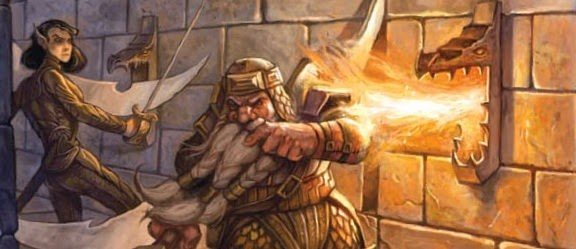
Traps involving animals and monsters
Some traps might include animals or even monsters. Why use a blunt instrument when you can really have fun with your delvers? Some of these traps might include:
- Traps which are manually set off by monsters in a dungeon in ambush
- Pit traps with wolves, hell hounds or displacer beasts waiting below
- Trip wires which close off all of the exits but release horrible beasts in the room with the intruders
- Loose stones in the floor which open up gates in the dungeon and release many new wandering monsters to plague the adventurers
- A gelatinous cube or black pudding waiting at the bottom of a pit
- Green slime placed conveniently over an archway
One of my favorite encounters in my games has been when a party of my players had gotten rather powerful in level. They pretty much were at a point when they marched through dungeons kicking ass and taking names. Nothing was much of a danger to them any more. Until they met a small group of kobolds……
These kobolds were waiting at the far side of a room. A couple of them held torches. The others held swords. They were taunting the adventurers as they arrived and waiting for the delvers to close in and melee.
My adventurers were cocky. They had no fear of a few kobolds. So they charged in swords swinging. And fell into a thirty foot pit which stretched out in front of the kobolds. The pit was filled with oil. And the kobolds dropped their torches in.
The spell casters and others in the back row watched their friends burn in horror as another group of kobolds sprang on them from behind………
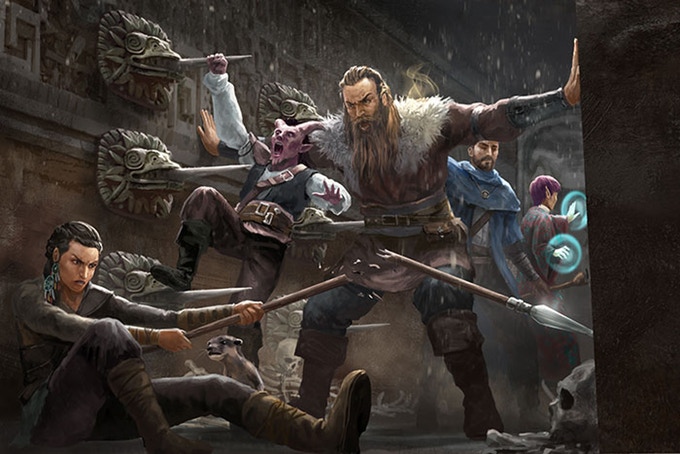
Triggers that set off a trap
Traps in Dungeons and Dragons are often triggered by some device. Often these triggers are unseen by the delvers as they pass through the dungeon and they inadvertently set the trap off. Some triggers might include:
- Trip wires
- Weighted levers
- Pressure plates
- Loose cobble stones
- Flawed support beams
- Scales

The Dreaded “Click”
No traps in dungeons and dragons are as terrifying to the player character as the dreaded “click.” The delvers have their thief picking a lock and suddenly hear a click from the treasure chest…..or from the lock….or from behind them…..
Sometimes less is more. The adventurers will desperately fear what this click might be. Or worse…they might hear grinding gears somewhere off in the dungeon and not know what this means.
Sometimes just to mess with my own players when they tell me that they are opening a door I will tell them that they hear a click……. pause for a bit…… and then tell them that the door opens. This drives them crazy. And it makes them paranoid about traps.
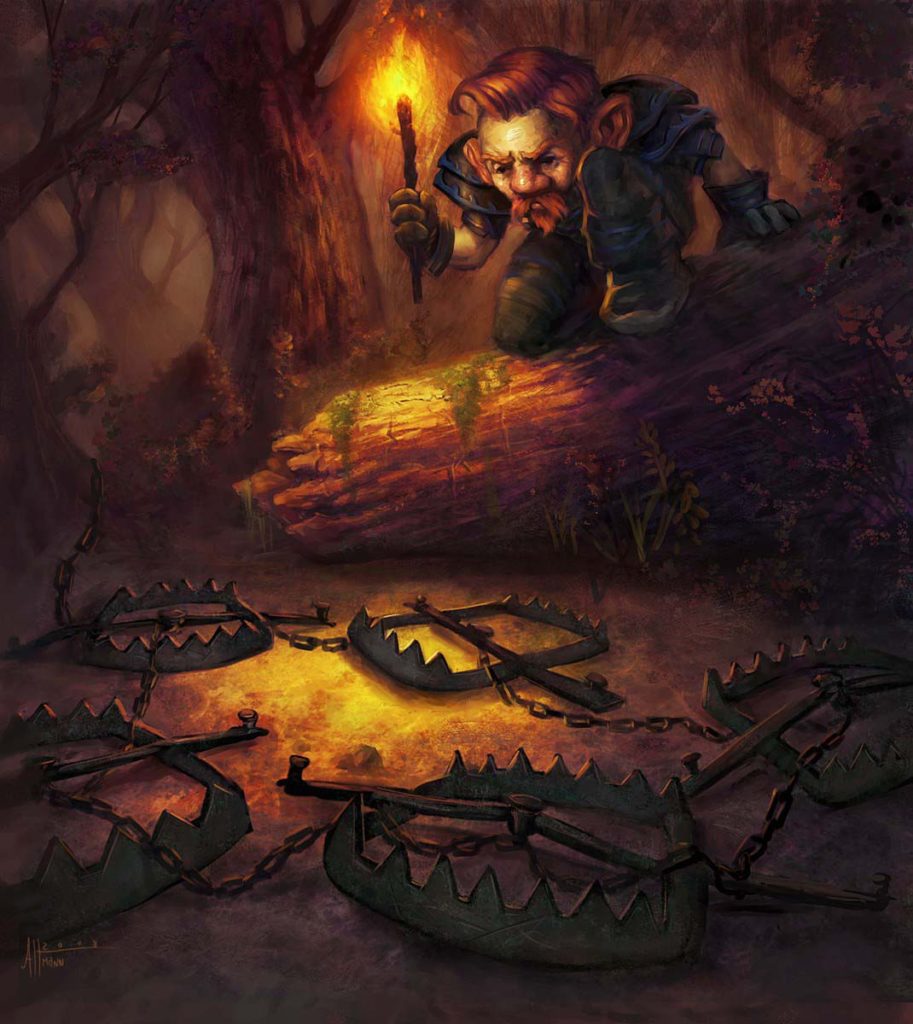
Magical Traps in Dungeons and Dragons
I personally am not that big a fan of traps that just magically zap a player for damage. I do use magic in some traps such as the teleporters. But those do not just magically damage individuals. Now magical runes in a book or a chest are certainly used by me. But one walking into a room and getting zapped by a lightning bolt are not really that exciting for the player or the dungeon master so I use that sort of thing very sparingly.
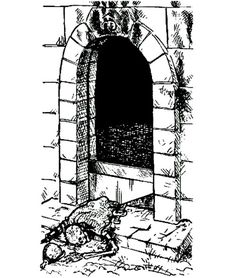
Some traps in Dungeons and Dragons are more deadly than they should be
Sometimes the unpredictable actions of your players can make a trap more deadly than it should be. Or it can make a deadly trap not deadly at all. The reality in a role playing game is that players do not always do what is expected.
That same high level group that I mentioned in my story about the kobolds earlier had another deadly encounter with a trap that involved no monsters. This trap was deadly. And I fully expected that perhaps one player might die from it if the party was not careful. But instead….the entire party died. From a single trap.
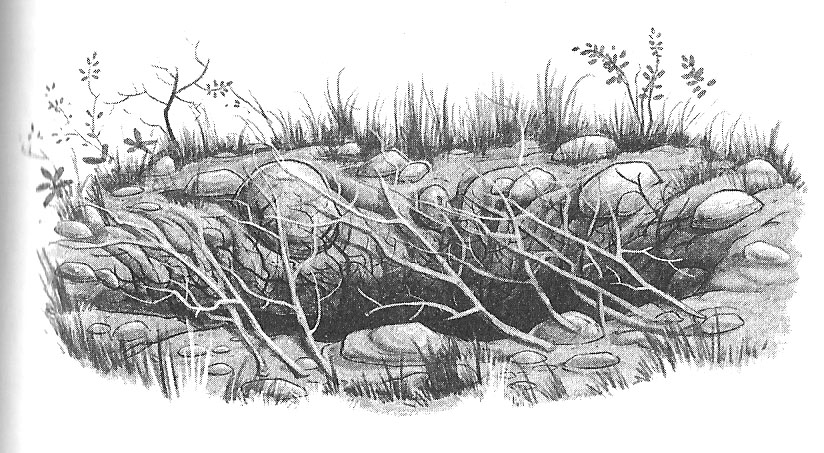
The party came upon a crypt in a dungeon. At this point the party was high level and very powerful. They feared very little in the dungeon. So they did not even bother checking for traps on the crypt. They had already encountered a vampire in a similar crypt earlier. So they just shoved the lid off of this one. But the lid was very heavy. So all of the party crowded around the crypt and shoved off the lid.
The crypt released poison gas into the room. Everyone was close to the crypt so all needed to make a saving throw versus poison or die in 1D4 rounds. Poison in 1st edition was pretty brutal. Save or die is typical for 1st edition poison use. Naturally I assumed that one or two people might be close to the crypt when the trap went off. But all of them were clustered around it. All made their saving throw rolls. None rolled higher than a five. Total party kill. From sheer stupidity.
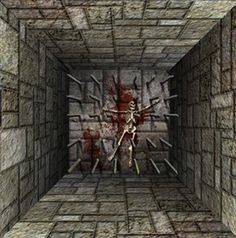
If you enjoyed this article then you might enjoy these:
- Thieves in Dungeons and Dragons
- Torture Devices in Dungeons and Dragons
- Sieges in Dungeons and Dragons
- The Tax Man in Dungeons and Dragons
- Psionics in Dungeons and Dragons
- Illusions in Dungeons and Dragons
- Illusions in Dungeons and Dragons Part Two
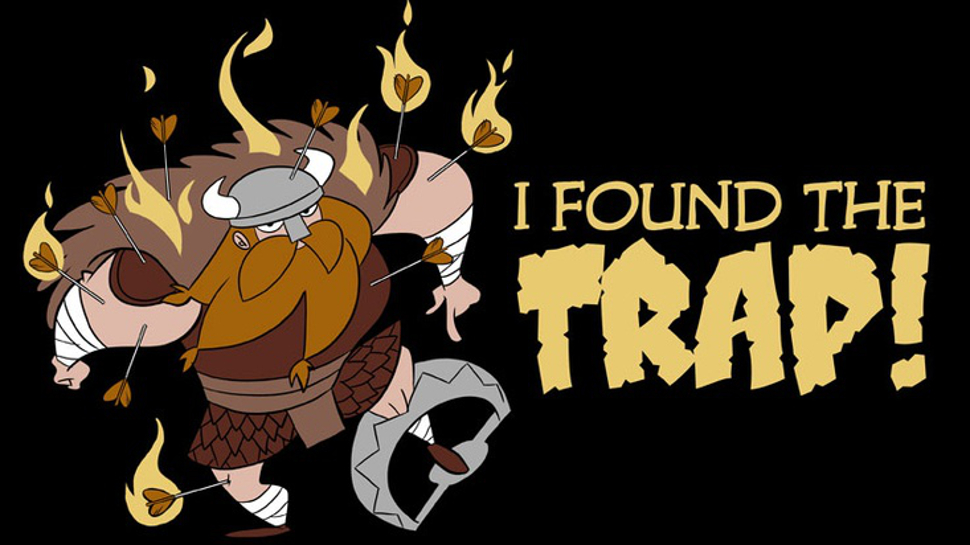


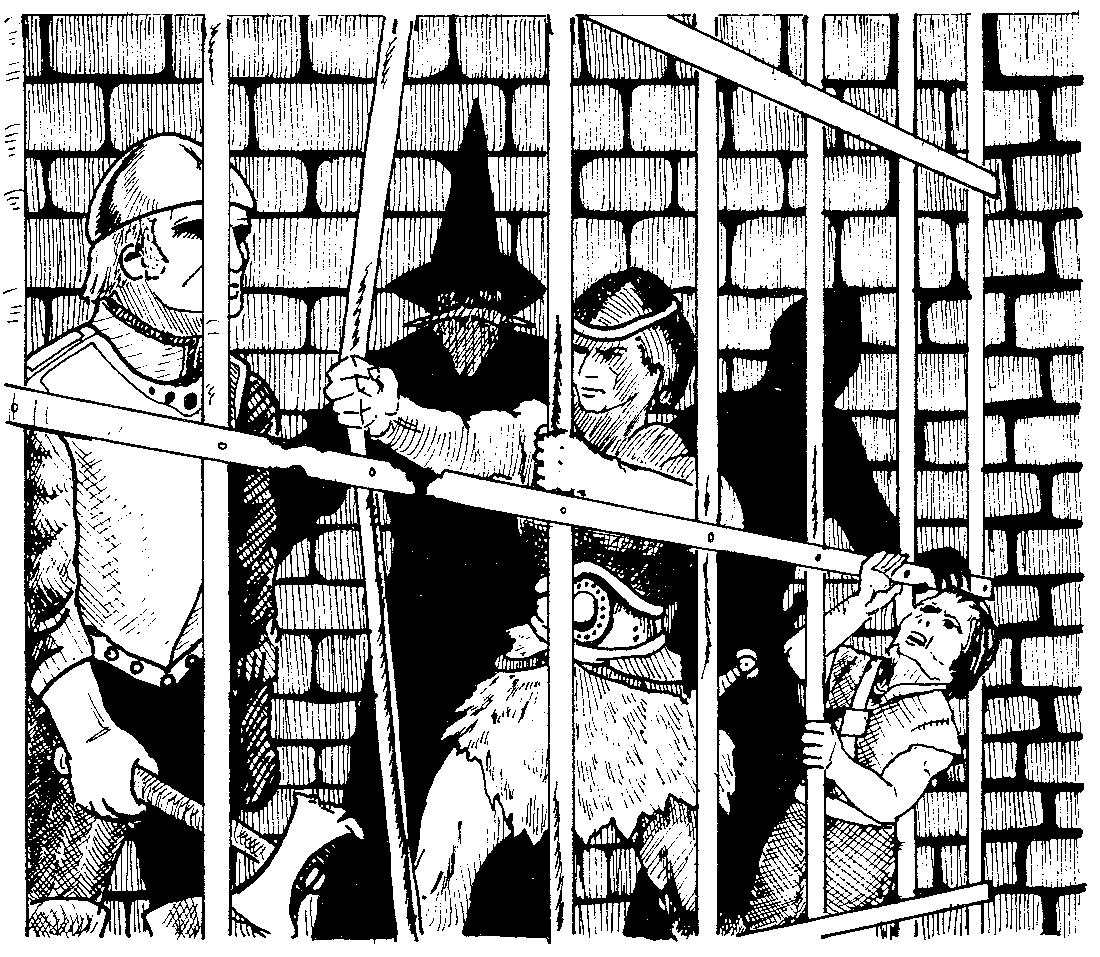
Great post! I linked folks over here last week. Keep up the good work!